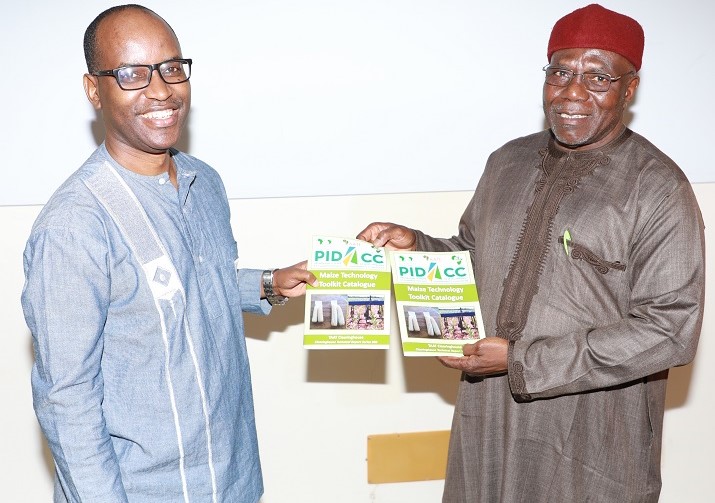
By Greg Odogwu
Mankind applauds itself for a swift evolutionary glide through the Stone Age marked by naked butted hunters, to the age of Enlightenment and its science and technology milestones. But little do we know that climate change, caused by these enlightened fixtures, is about to chase us back to a new age of forced nakedness. The difference is that this time, rather than caused by ignorance, the new butt-naked lifestyle would be the only way to escape a severely warmed earth. Welcome to future fashion.
Fashion has an interesting connection to the environment. It is both at the receiving end and at the giving end. The way we dress could remarkably contribute to the aggravation of global warming. Conversely, climate change could have a definite effect on the way we dress, for good.
Let us start with an illustration of how climate change could dictate how we dress. Because of their country’s climate, most Kenyans dress like South Africans: jackets, parkas, hats and even mufflers. This has defined the fashion in parts of the country overtime. Nairobi has a very cool weather, which particularly attracts Westerners. The weather is so clement that most hotels in the city do not need to install air conditioners. If you need cool air, just open the window, and the chill gushes in.
But this year, due to unusual hot weather, believed to have been spurred by global warming, the fashion has definitely been altered. A Kenyan friend told me that people now shop for light clothing, while the usual warm clothes were jettisoned. Some are also apprehensive that the hot weather is a sounding bell to a flood-prone year.
I recall that recently, the United Nations Environment Programme stated that Kenya is an example of a developing country which has been affected by the impacts and effects of climate change. Erratic weather patterns characterised by devastating floods and cycles of droughts have become more frequent with increasing intensity.
Still thinking about what climate change could do to fashion, an American analyst was more futuristic, and poignant. By this century’s end, he says, the average American will have to endure 45 to 96 days a year in which the mercury will top 35C. As a result, we would anticipate a fashion situation approximating that of an uncensored Britney Spears or Beyonce music video. Wherever you look, there will be thongs and halter tops, bared abdomens, buttocks and backs, and exposed flesh of both the male and female bathed in sweat. Golfers and other summer athletes will have to give up their shirt-and-trouser and dress more like swimmers. The elderly and even the infirm will have to go naked in public to avoid being consumed by the heat. And then, suits and neckties would become obsolete and a new generation of executives must start dressing like teenagers – to survive the heat!
Conclusion: Americans of all kinds will be showing more skin, in more places, threatening to distract those among us who are trying to focus their thoughts on their faiths and families!
And what can fashion do to aggravate global warming? A lot. It extends from the farmers that grow cotton to the women beading in ateliers, it encompasses millions of people from agriculture to the creative marketing and selling. It is also dependent on the animal kingdom and some of the most fragile ecosystems on earth. Therefore fashion touches on every great environmental theme: climate change, declining available resources, lost wilderness, flooding, through to the flipside of flooding – drought. And of course, all of these are interconnected.
Today, approximately 80 billion garments are produced new every year. Imagine all the resources that this requires. To make our clothes we need water (between 11,000 and 20,000 litres of water are needed to produce enough textile for one pair of jeans). From oil for synthetic fibres, to energy for textile production and dye for colour, we are dependent on multifarious resources at a time when these resources are being degraded at unprecedented speed.
Another effect is waste. Fast fashion has been a huge part of this, as we all became voracious consumers caught up in an unsustainable churn of clothes, micro trends and disposability. This industry has created a “factory of consumers” whereas it is the vogue to drive/create demand – with the runway models and brand promoters working as foot soldiers. We buy in a rush and discard as quickly. But where all these clothes go? As consumers, we seem to worship at the altar of “wear-it-today, chuck-it-tomorrow” fast fashion mentality.
This has culminated in giving the fashion industry a huge carbon footprint. A carbon footprint is the total amount of CO 2 and other GHGs emitted over the full life cycle of a process or product. It takes into account energy inputs and emission outputs throughout the whole production chain from exploration and extraction of raw materials to processing, transport, final use and disposal. The textile industry is one of the biggest GHG emitters on Earth, owing to its huge size and scope.
But there is hope. The world is really doing all it could to adapt to the changing climate, and the fashion industry has joined. First there was the launch of the world’s first zero-deforestation handbag collection with Gucci, a couple of years ago; then last year saw the innovative fashion brand event Green Carpet Challenge debut in Europe; followed by the fashion presence of Eco-Age group at the United Nations’ New York Climate Change Summit. It was amazing.
Next we woke up one morning to hear that one of the world’s top most fashion icons, Dame Vivienne Westwood, has officially joined environmentalism. It was a shock to fashionistas to see this accomplished eccentric preach conservation. Despite operating several eponymous lines (her label has ranges titled Anglomania, Red Label and Gold Label, and she also creates bridal dresses) Westwood spoke against buying too many clothes, and declared.“Instead of buying six things, buy one thing that you really like. Don’t keep buying just for the sake of it. I just think people should invest in the world. Don’t invest in fashion, but invest in the world.”
So, what’s the best that can happen? It is just for the rest of us to join the fray, especially in Africa – which has become a dumping ground for Western fashion, especially the so-called ‘fairly used’ grade. Most of our traditional societies were used to ‘down-to-earth’ modes of dressing, renewable and eco-friendly. Why can’t we go back to this simple – unstuffy – lifestyle to save our trees, cut out on waste and even save more cash? Truth is, we are natural eco-friendly people; and should not wait till Vivianne Westwood shaves off her dyed hair in protest against eco-killer chemical production, before we realise how consequential fashion is to environmental sustainability. Anyway, it will be easy for us to switch lifestyle in the near future when the world would be forced to go naked. Unlike the West, it has not been long we left the practice!











